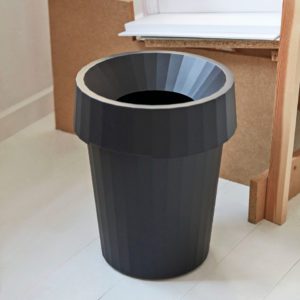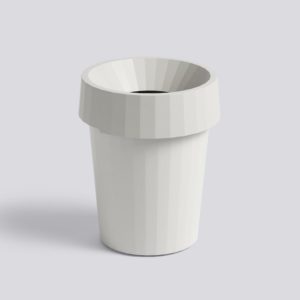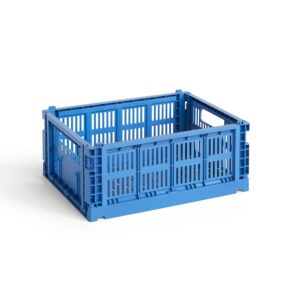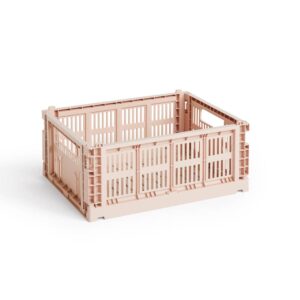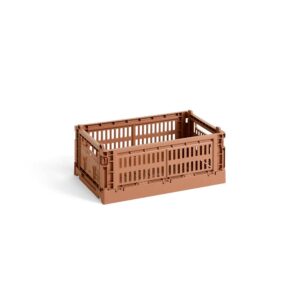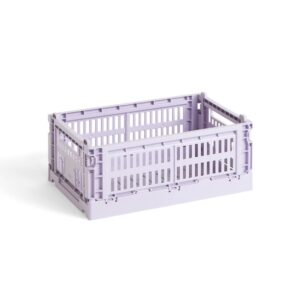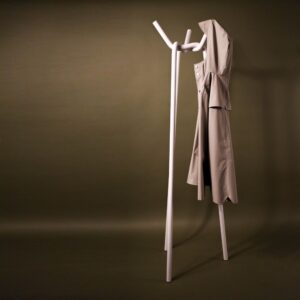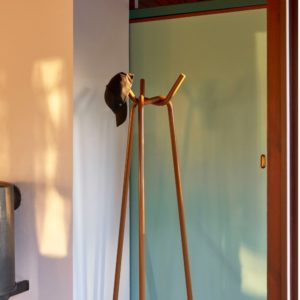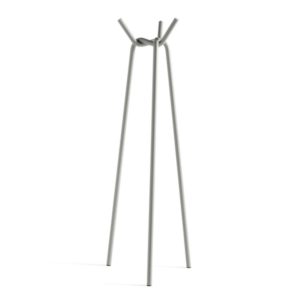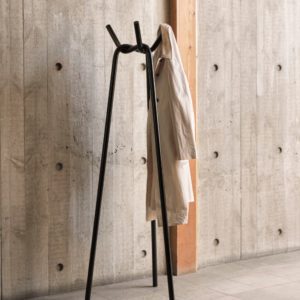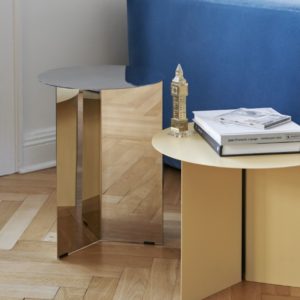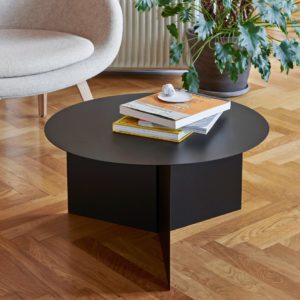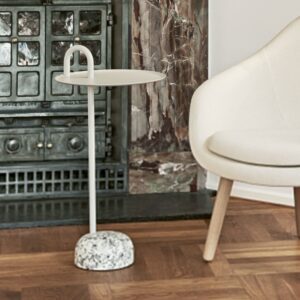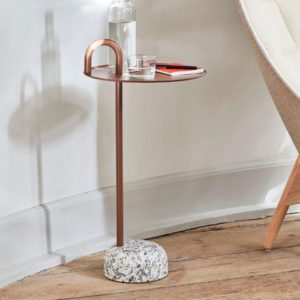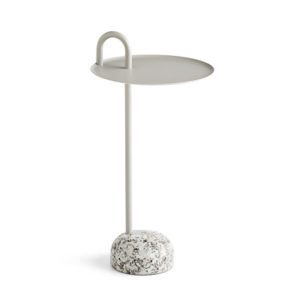Welcome to the world of HAY, the iconic brand dedicated to innovation, functionality, modern aesthetic, and above all else, good design. In this post, we investigate the Danish furniture company that has not only shaped the contemporary design landscape but has also made a mark with its commitment to accessibility and affordability.
Embark with us on a journey through HAY’s top 5 designs of all time —each a testament to the brand’s vision, creativity, and dedication to redefining the intersection of form and function. From iconic coat racks to versatile storage solutions, these designs encapsulate the essence of HAY’s philosophy, and what good design is all about.
But First… How HAY Began
The story of HAY design began in 2002 when Mette and Rolf Hay, a husband-and-wife duo, founded the Danish furniture company in Copenhagen. The idea for starting a furniture company originated when Rolf Hay met Troels Holch Povlsen, who had founded the Danish clothing giant Bestseller. The two decided to venture into furniture design together.
HAY officially introduced its first collection in January 2003 at the IMM Cologne, an annual furniture fair in Germany. The company aimed to create well-designed furniture that was not only aesthetically pleasing but also affordable, making design concepts accessible to a broader audience.
In 2004, HAY opened its first store on Pilestræde, located in the centre of Copenhagen, and in 2007, the flagship store, HAY House, was established in central Copenhagen, serving as a showcase for their designs.
Mette and Rolf Hay actively serve as creative directors, with Rolf overseeing the furniture division and Mette managing accessories. They are deeply involved in the development of HAY furniture and accessories, working collaboratively with both in-house designers and an array of international designers, such as Ronan & Erwan Bouroullec, Nathalie Du Pasquier, Stefan Diez, Johannes Torpe, and Naoto Fukasawa.
As of 2019, the majority of HAY is owned by the U.S. furniture company Herman Miller. HAY’s journey reflects a commitment to combining quality design with affordability and accessibility, making it a prominent player in the world of contemporary furniture and accessories.
Shade Bin
The HAY Shade Bin, designed by Copenhagen-based industrial designer Thomas Bentzen, seems to embody a thoughtful and functional approach to design. It reflects Bentzen’s belief in creating products that engage, generate curiosity, and meet human needs.
Crafted in tough polypropylene, the Shade Bin not only serves its utilitarian purpose but also adds an element of elegance. The choice of materials like polypropylene suggests durability and practicality, suitable for office environments where a waste bin needs to withstand daily use.
One interesting aspect is the inclusion of a matching lid designed to hide the chosen liner, maintaining a clean and streamlined appearance. This attention to detail not only serves a functional purpose but also adds to the overall aesthetic appeal.
It’s intriguing to see designers like Thomas Bentzen approaching everyday objects with a mindset that goes beyond the obvious, creating products that balance utility and design.
Storage Colour Crate
The HAY Storage Colour Crate is a versatile and sustainable storage solution designed for multifunctional use. Crafted from recycled post-consumer plastic waste, it embodies HAY’s commitment to environmental responsibility. The choice of recycled materials not only contributes to sustainability but also reflects a conscious effort to repurpose plastic, reducing its impact on the environment.
Its design features ventilation, ensuring proper airflow within the crate, making it suitable for various storage needs. The stackable nature of the crate adds organisational convenience, allowing you to create efficient storage arrangements. The availability of different colours and sizes provides a touch of personalization, enabling users to choose options that align with their preferences and storage requirements.
The recyclability of the crate, marked with the #5 symbol, underscores its eco-friendly attributes. This ensures that, at the end of its life cycle, the crate can be responsibly disposed of through recycling processes. A noteworthy practical aspect is the crate’s ability to be folded down flat when not in use. This space-saving feature enhances its utility in dynamic environments where storage needs may vary over time.
The HAY Storage Crate stands out as a sustainable, versatile, and thoughtfully designed storage solution, catering to modern demands for functionality and environmental consciousness.
Knit Coat Rack
The HAY Knit Coat Rack, designed by Japanese designer Jin Kuramoto, is a striking piece characterised by its simple yet iconic sculptural design. Comprising three powder lacquered steel pipes interconnected in a three-dimensional manner, the coat rack’s structure is reminiscent of the tactile experience of touching materials and the experimental processes of bending and knitting ropes and metal rods.
Inspired by these elements, the Knit Coat Rack serves as an extension of HAY’s wardrobe and garment hanging options. Its flat-packed design facilitates easy assembly, aligning with HAY’s ethos of practicality. Featuring a high gloss finish that creates a lustrous effect, the coat rack adds functionality and visual interest to various spaces, including hallways, bedrooms, and other private or public areas.
The coat rack’s distinctive sculptural design not only serves a practical purpose but also enhances the aesthetic appeal of interior spaces. Its interconnected steel pipe structure provides strength and stability while contributing to its unique visual identity. The HAY Knit Coat Rack embodies a blend of form and function, offering a visually striking and versatile solution for hanging garments.
Slit Side Table
The HAY Slit Side Table is a simple yet visually striking metal side table available in three shapes: round, rectangular, and hexagonal. Its design is inspired by paper origami, translating the intricate folds into a metal structure. The name “Slit Table” derives from the slit that emerges when the plate frame is folded underneath the table top, adding an element of artistic detail to the design.
One of the notable features of the Slit Table is its availability in a variety of contemporary colours and finishes, offering numerous combinations to suit different preferences and interior styles. This versatility allows you to customise your tables according to your decor or personal taste.
The Slit Side Table can be used individually as a standalone piece or arranged in pairs or clusters for a more dynamic and cohesive look. This flexibility in arrangement options makes it suitable for various spatial configurations, whether used in residential or commercial settings.
This table perfectly combines artistic inspiration with functional design, a stylish and adaptable furniture piece for enhancing interior spaces.
Bowler Table
The HAY Bowler Side Table, designed by Shane Schneck, is a compact and functional piece designed specifically for small spaces. Characterised by a single tube that extends upwards, the table not only creates a defined profile but also serves as a functional handle. This dual-purpose feature adds a practical element to the table’s design.
Constructed from powder-coated steel, the stem, handle, and tray contribute to the table’s durability and modern aesthetic. The use of a solid granite base provides stability while keeping the table lightweight enough for easy mobility.
Shane Schneck’s background and design philosophy contribute to the table’s uniqueness. As an American designer based in Sweden, he founded his Office for Design studio with an international outlook. His approach involves creating products that are simple yet innovative, challenging industry standards. The Bowler Table exemplifies this philosophy, featuring a touch of surprise, playfulness, and boldness in its conception, through colour, form, and material use.
This iconic table stands out as a thoughtfully designed and versatile furniture piece, blending functionality with modern aesthetics.
Wrapping up our exploration of HAY’s top 5 designs, we’ve delved into a world where form meets function with typical Danish precision. From the strategic minds of Mette and Rolf Hay to the ingenuity of designers like Thomas Bentzen and Jin Kuramoto, each piece stands as a testament to HAY’s commitment to accessible and well-designed furniture.
These designs, such as the Shade Bin, Storage Crate, Knit Coat Rack, Slit Side Table, and Bowler Side Table, reflect not only HAY’s evolution but also its lasting impact on contemporary furniture. The thread of sustainability, seen vividly in the Storage Crate, showcases the brand’s responsibility towards the environment.
This post has uncovered the thought processes of designers who go beyond the ordinary, crafting products that engage, surprise, and challenge norms. As you integrate these pieces into your spaces, remember that each one carries a story—a narrative shaped by designers who dared to innovate.
In celebration of HAY’s legacy, where design becomes a form of expression, we invite you to explore the possibilities at the intersection of design and everyday functionality.

